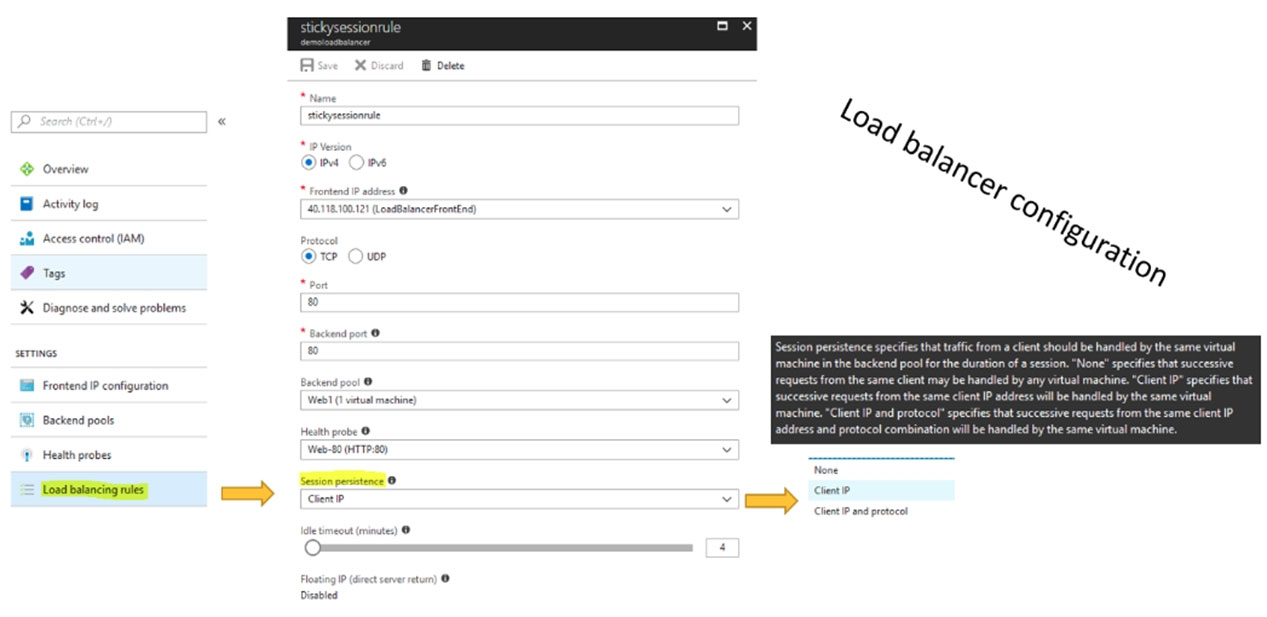Ensuring Consistent Web Server for Visitors
Question
You have five Azure virtual machines that run Windows Server 2016. The virtual machines are configured as web servers.
You have an Azure load balancer named LB1 that provides load balancing services for the virtual machines.
You need to ensure that visitors are serviced by the same web server for each request.
What should you configure?
Answers
Explanations
Click on the arrows to vote for the correct answer
A. B. C. D.D
With Sticky Sessions when a client starts a session on one of your web servers, session stays on that specific server. To configure An Azure Load-Balancer For
Sticky Sessions set Session persistence to Client IP.
On the following image you can see sticky session configuration:

Note:
There are several versions of this question in the exam. The question can have other incorrect answer options, including the following:
1. Idle Time-out (minutes) to 20
2. Protocol to UDP
https://cloudopszone.com/configure-azure-load-balancer-for-sticky-sessions/The correct answer is D. Session persistence to Client IP and Protocol.
Explanation:
Azure Load Balancer is a Layer-4 (TCP, UDP) load balancer that distributes incoming traffic among healthy instances of virtual machines. In this scenario, the Load Balancer LB1 is providing load balancing services for the five web servers.
When visitors access the web servers through LB1, by default, LB1 distributes the traffic among the web servers using a round-robin algorithm, which means that each incoming request is distributed to the next available web server in a circular order.
However, if you want visitors to be serviced by the same web server for each request, you need to enable session persistence on the Load Balancer LB1. Session persistence, also known as sticky sessions, enables the Load Balancer to bind a user's session to a specific web server for the duration of the session. This ensures that all requests from that user during the session are sent to the same web server, thus maintaining the session state.
There are different methods for implementing session persistence on Azure Load Balancer, such as source IP affinity, protocol affinity, or cookie-based affinity. In this scenario, the best method to use is Client IP and Protocol affinity, which binds a user's session to a specific web server based on the client's IP address and the protocol used for the connection (TCP or UDP).
Therefore, the correct answer is D. Session persistence to Client IP and Protocol. Option A (Floating IP with direct server return) and option B (Floating IP with disabled direct server return) are not relevant to this scenario, as they are used for specific network traffic scenarios, such as high-performance computing or asymmetric traffic flows. Option C (a health probe) is also important for load balancing, as it monitors the health of the web servers and removes any unhealthy instances from the load-balanced pool, but it is not directly related to session persistence.